The Sensoji temple housings lit up in the evening are my favorite scenery. I took these photos just after it stopped raining around 19:00, so wet streets shined in the dark. Since a few groups were visiting the temple at that time, it was great timing for me to take photos of the temples and gates there. Usually, the place is filled with a vast crowd in the daytime, and it is difficult to stop walking for a while for photo taking.
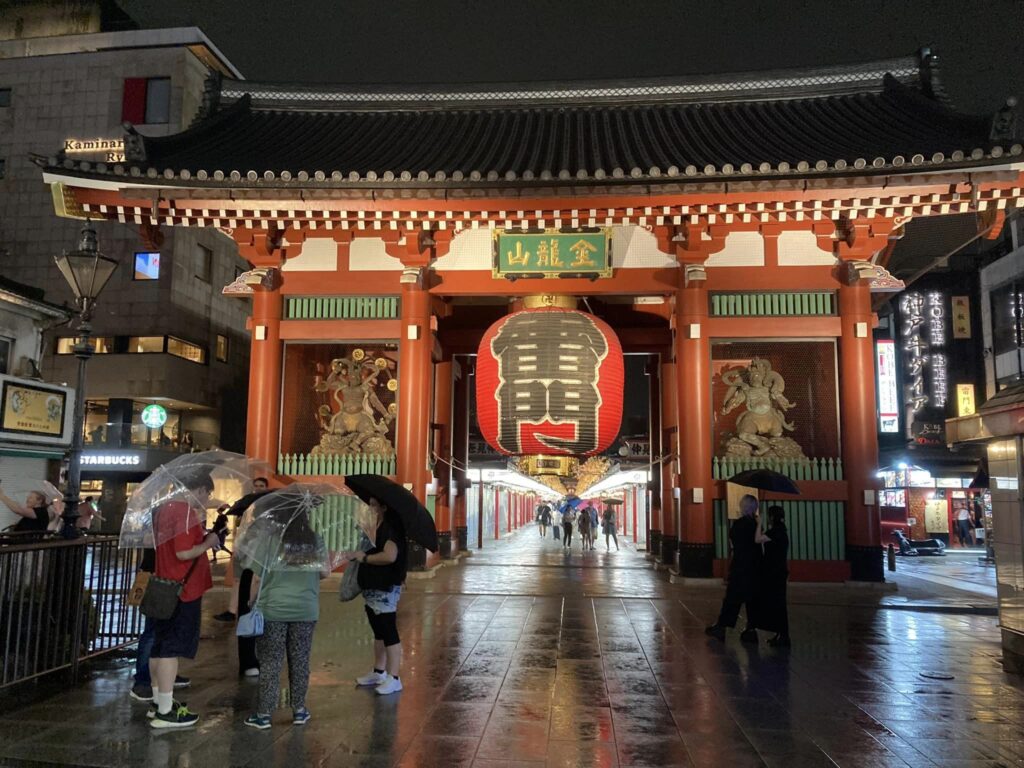
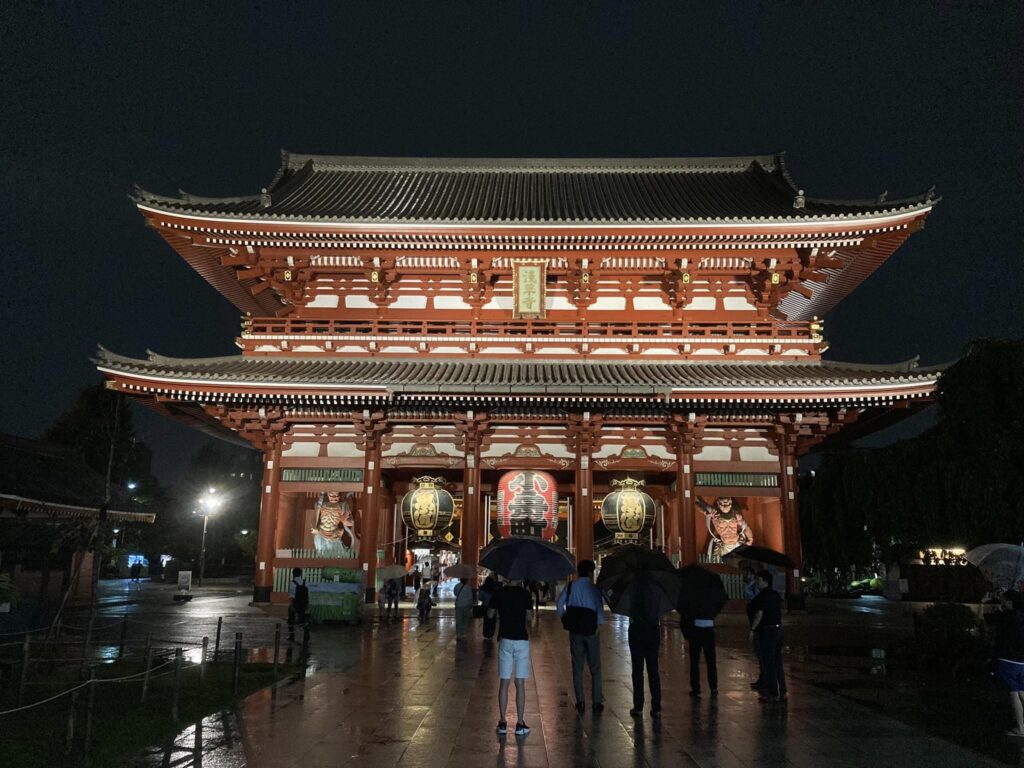
Their red color becomes more beautiful in the dark and secret atmosphere. These red giant lanterns are donated by citizens, followers, and major companies such as Panasonic, which proves that many people have loved the temple.
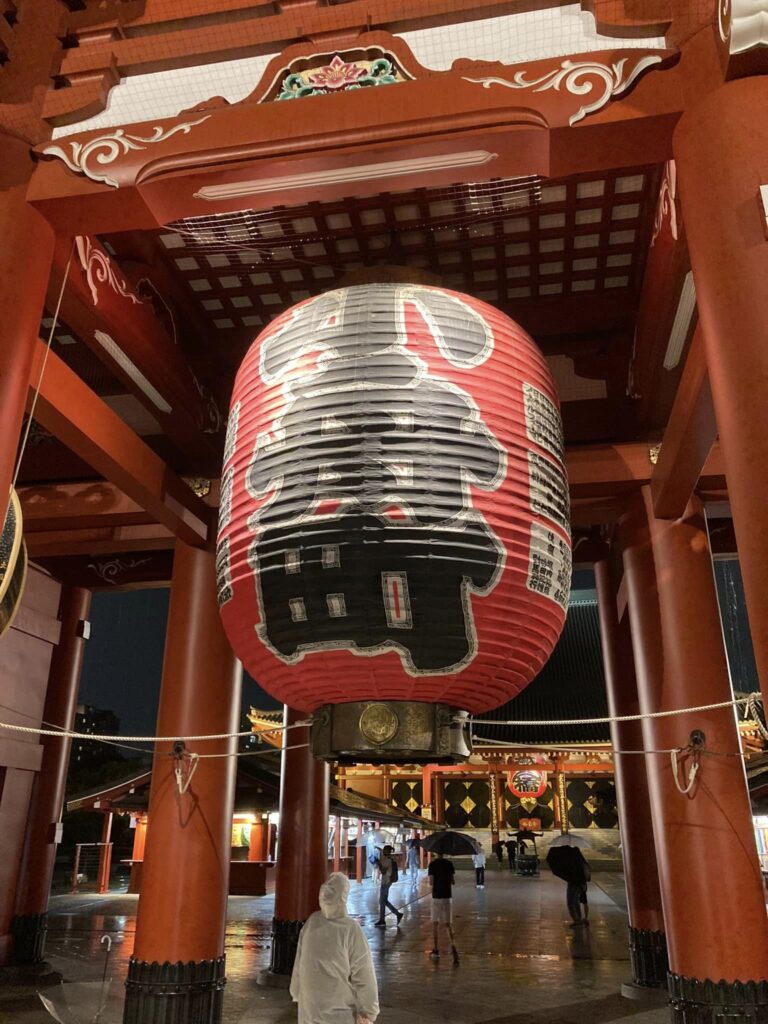
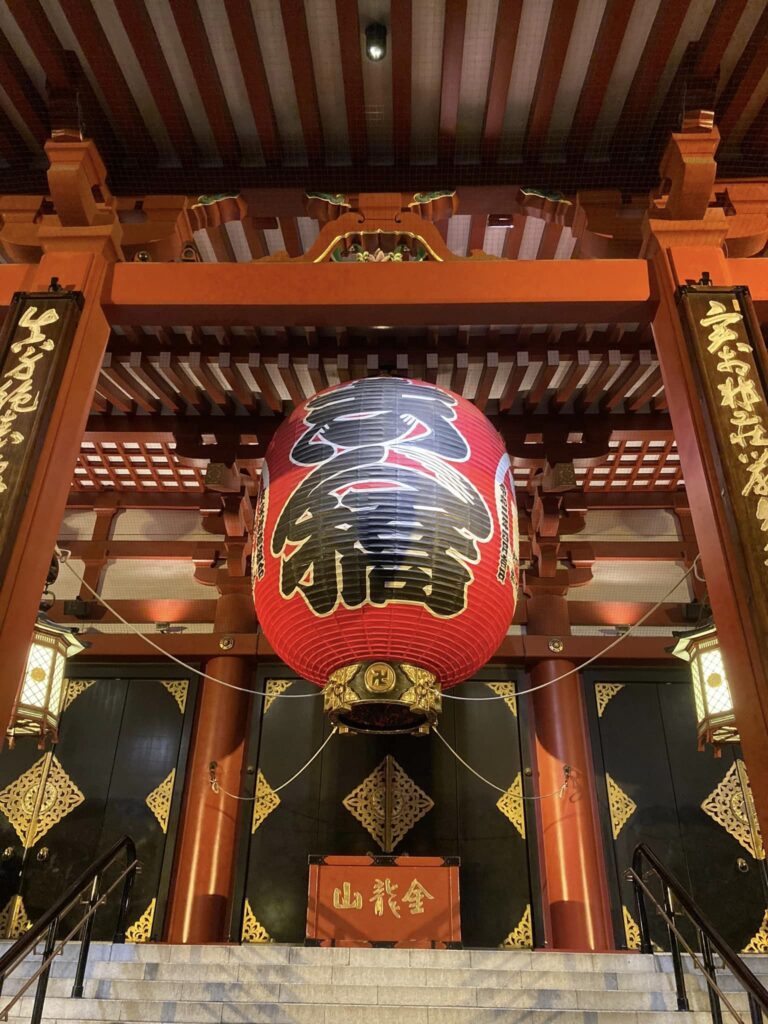
The five-layer pagoda is incredibly beautiful at night, emitting awesome vibes and making passengers stop for a while and look up at its brilliant form.
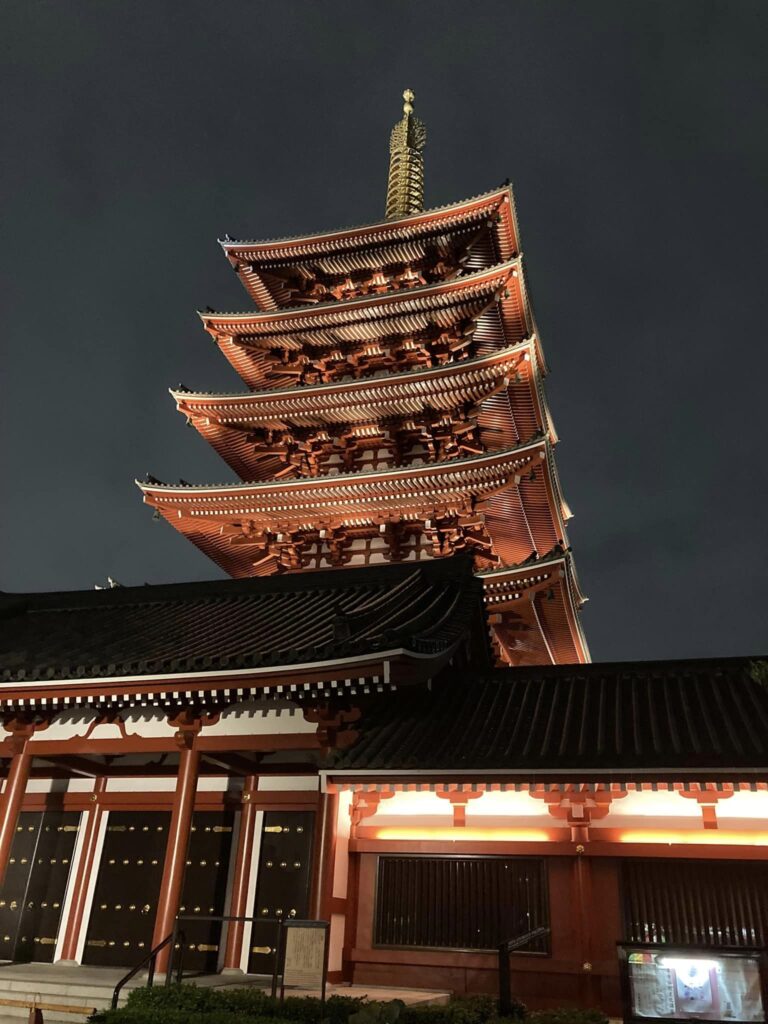
It’s the main worship hall of the Sensoji temple, with elegant curve on the roof which I consider makes us feel indignity and power of the temple.
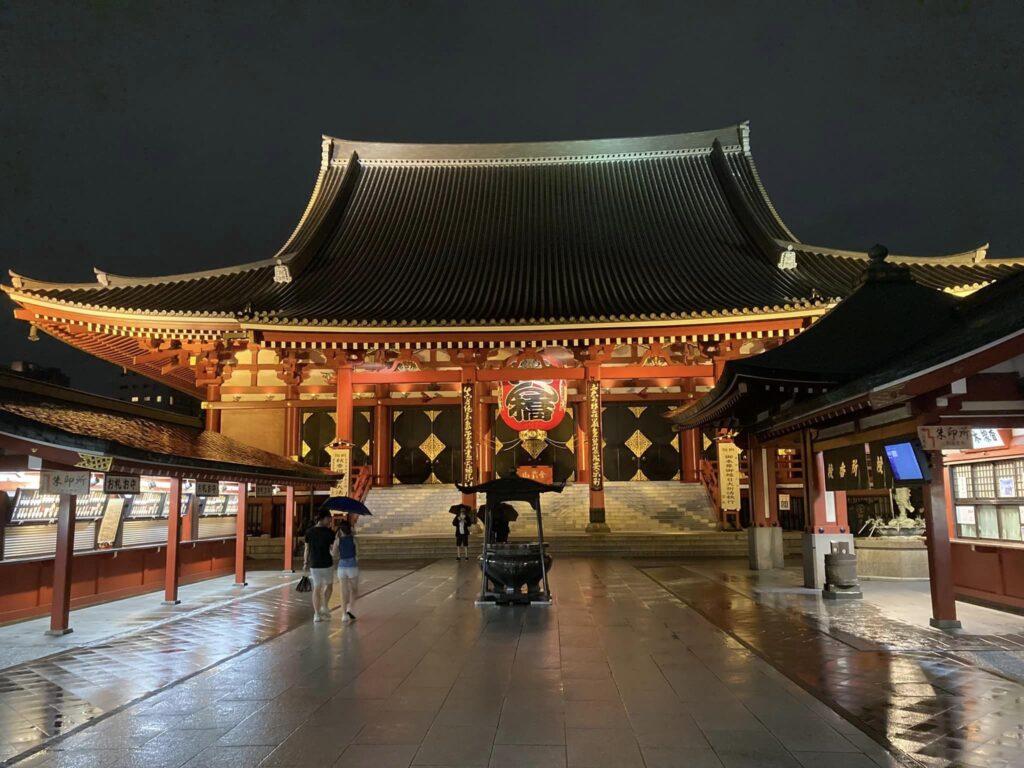
The two statues of Nio, gradians of the temple, are standing at the gate of Hozomon. Look at their mouths. One opens his mouth and seems to be saying Ah, and another closes his mouth and seems to be saying Uhn. Ah-Uhn is a couple of words of the first word, Ah, and the last word, Uhn, in the Sanskrit alphabetical order, which means the beginning meets the end and denotes a complete combination. Coincidently, the Japanese alphabetical order starts with Ah and ends with Uhn, so we call this combination “Ah-Uhn,” which means synchronizing and pulling difficulties off.
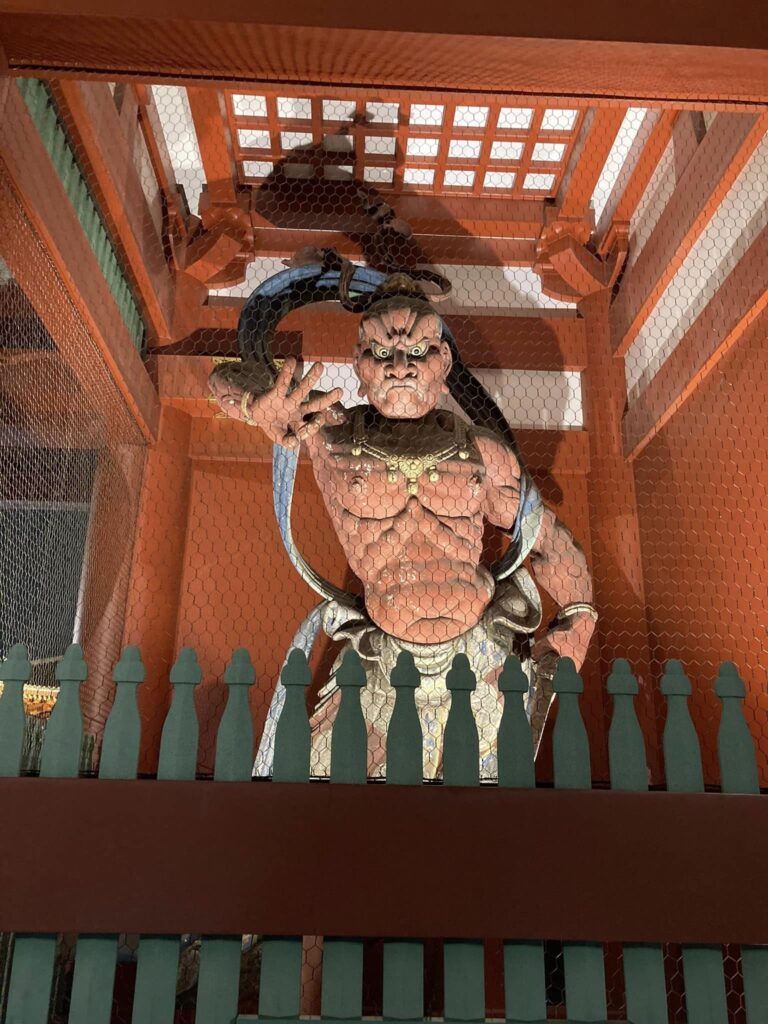
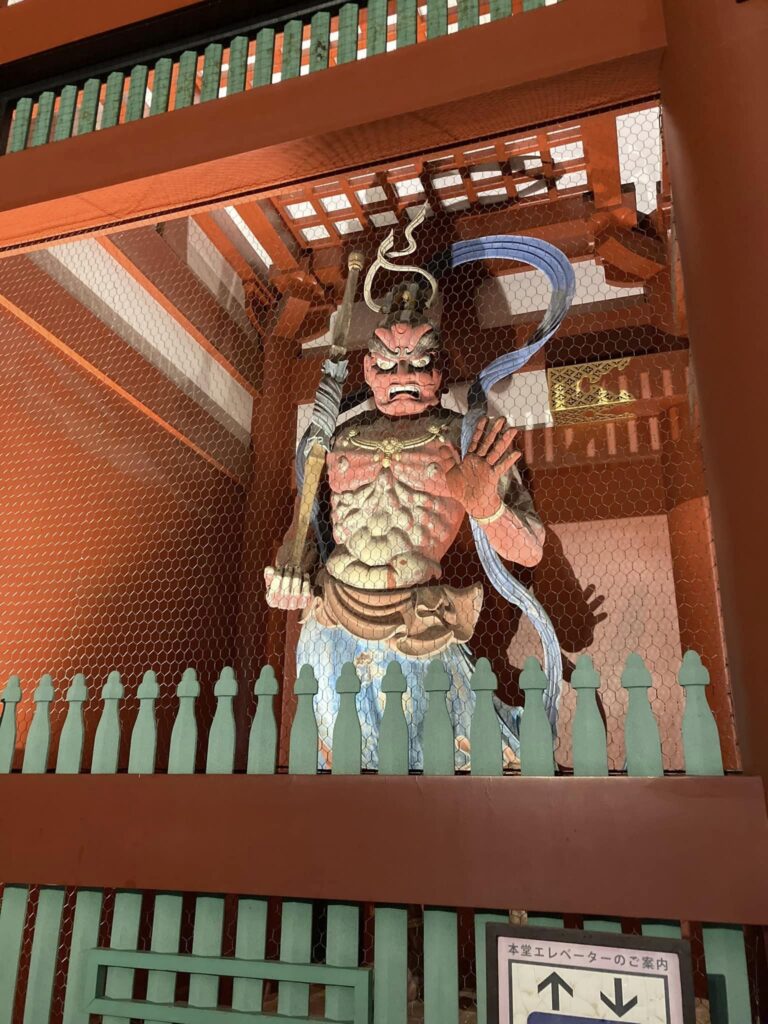
A pair of deities stand in the Kaminarimon gate; the deity with drums is Raijin, a deity of thunder and lightning; another shouldering a long air bag is Fujin, a god of wind. Both are related to natural disasters such as typhoon and flooding and are enshrined to protect the temple. Ancient people believed both managed wind and rain and gave people a good harvest.
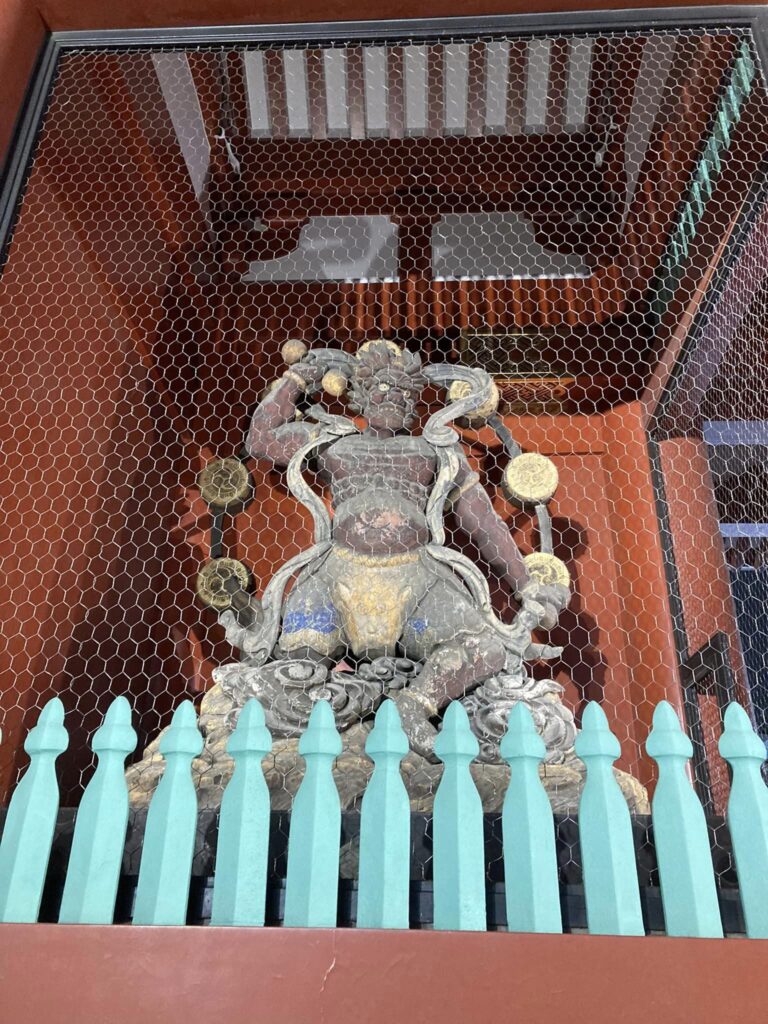
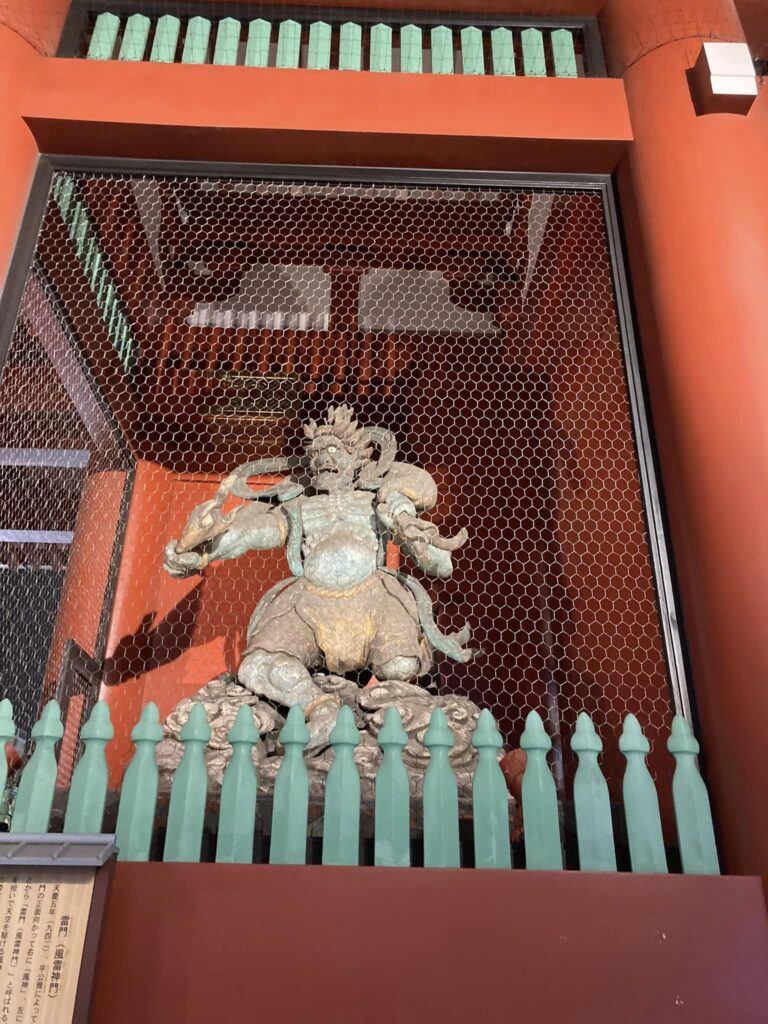
Anyway, I strongly recommend you visit Asakusa after 19:00 if you have time at night.
If you are interested in the story and history of the Sensoji temple and its deities and need an English-speaking guide to visit the Sensouji temple, click the following link or “Contact me!” in the footer. I can
Please click the links to get updated via my X (former Twitter) and Instagram.
X (former Twitter): https://x.com/ToruGuide
Instagram: https://www.instagram.com/toruhigaki/
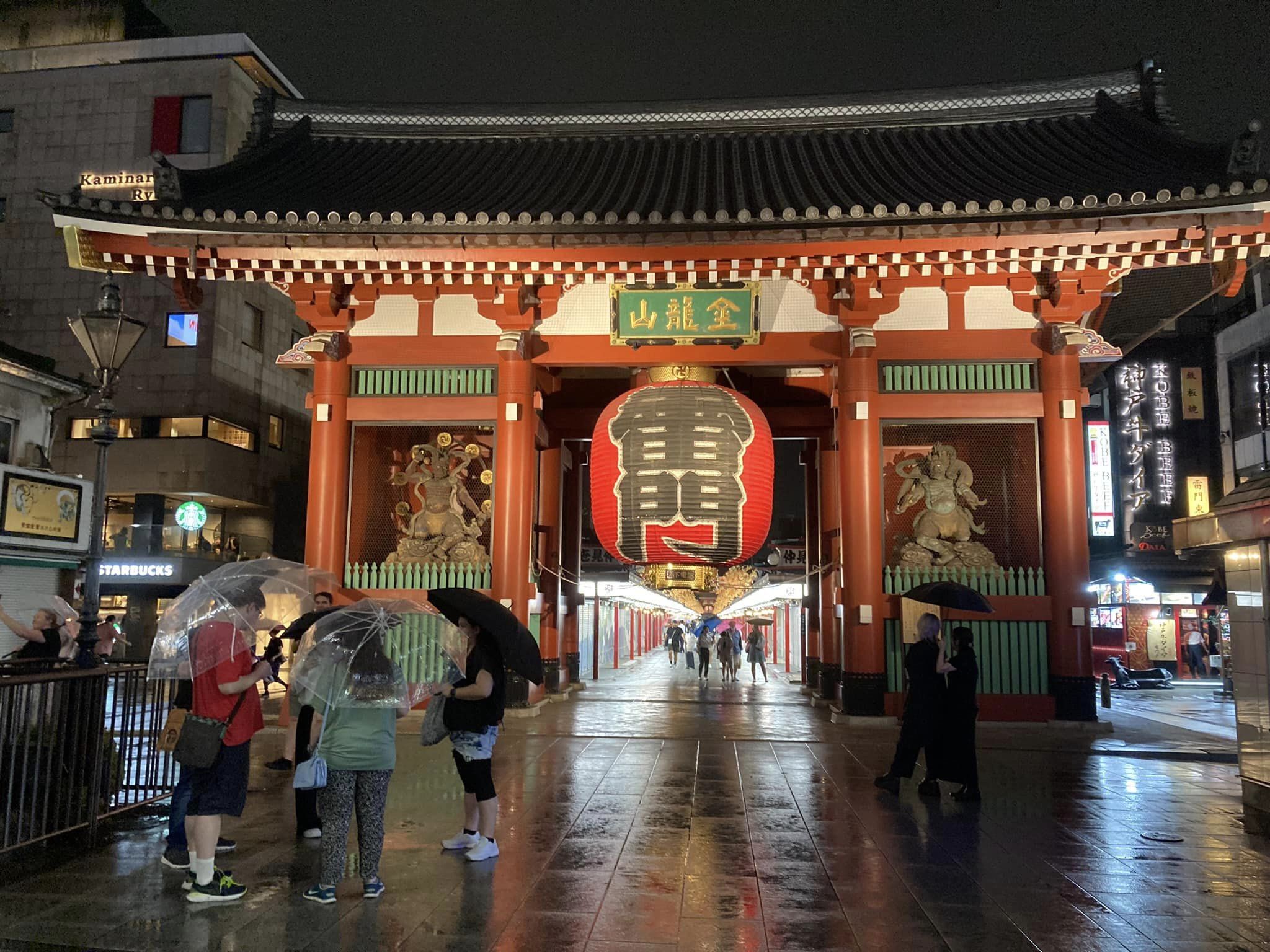


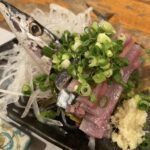
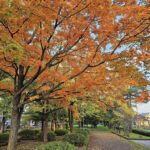
Comment